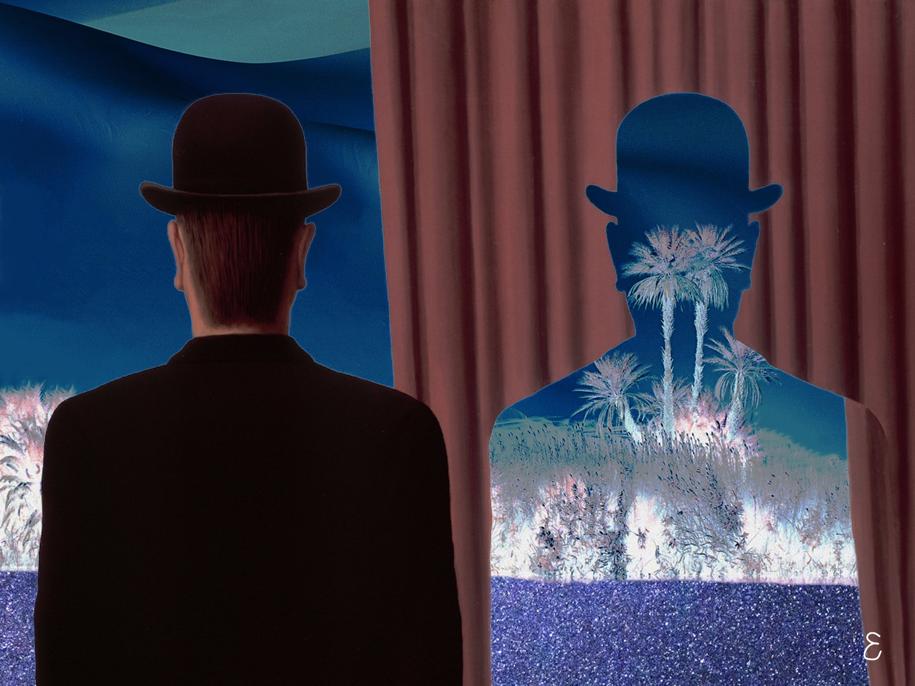It is the Arabic characters that made me want to learn the language. From the first time I came across Arabic calligraphy, in school textbooks, I was hooked. As a child, I used to live in a French country town and at the time, learning a foreign language was limited to four options: English, German, Spanish and Italian. So as soon as I got the chance, many years later, I started learning classical Arabic, in my spare time. I remember exactly what it felt like the first time I wrote the entire alphabet, after practising for more than two hours (the beginning goes like this, from right to left: (ا ب ج د ه و ز). I was so excited!
I felt like Champollion, the French scholar who deciphered the hieroglyphs through the Rosetta Stone, breaking the code of letters that remained mysterious for so long and being able to play with them. What I did not expect from this process was to discover a whole new world, a world far more fantastic than the tales from “One Thousand and One Nights”. I was about to enter another dimension that was always there, hiding in plain sight. Welcome to the Arab world!
The first continent: literature
 One of the first books I studied was a satire: The Adventures of Nasreddin Hodja.
One of the first books I studied was a satire: The Adventures of Nasreddin Hodja.
I loved the style of this collection of short stories, full of observations about the absurdity of everyday life and the stupidity of arrogant people. At first, readers are made to think that Nasreddin is a fool. But through his eyes and the way he responds to challenges, they come to realise that actually, he is the wise one.
I then flew into new heavens thanks to the poetry of Mahmoud Darwish, Nizar Qabbani and the refreshing stories of Ahlam Mosteghanemi. My curiosity, combined with my impatience and my frustration of not being fluent enough, pushed me to look for literature in languages that I read faster than Arabic. I loved “The Yacoubian Building” by Alaa Al Aswany and “Season of Migration to the North” by Tayeb Salih. But reading Arabic literature in its original language allows one to understand the real beauty of poetry and to enter the world of the author, with their own words.
The second continent: music
I remember the first time I heard a song by Umm Kulthum, an Egyptian singer and songwriter: it was during an Arabic class. I was quite surprised by the tone, the rhythm and the length of it (more than 20 minutes). How different, emotional and charming! Arabic music sounds fundamentally different for three reasons:
1. Traditional musical instruments in Arab musical ensembles are different from European ones. They consist of five main melodic instruments: the oud, the qanun, thenay, the violin and the buzuq, and some percussion instruments such as the riqq, the tabla, the tambourine, the mazhar, the katim and the sagat.
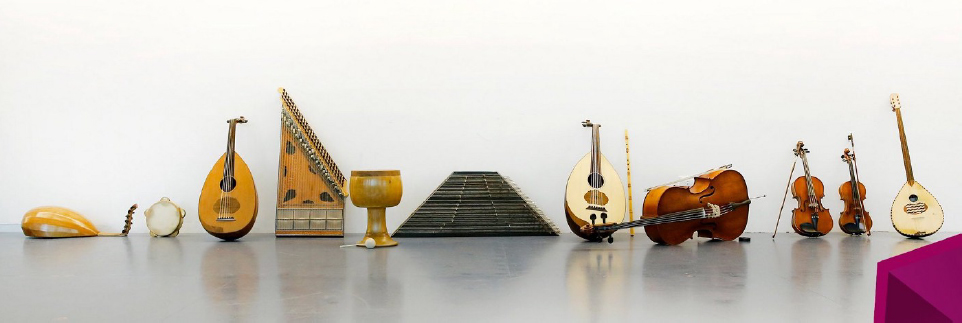
The main instruments in Arabic music. © Sheikh Jaber Al-Ahmad Cultural Centre
2. In order to compose and play oriental music, artists must use a system of scales called “maqam”. There are more than 200 maqams to choose from, all composed of do, ré, mi, fa, sol, la, si, and do. In this framework, there is something I have never seen in Western music: the existence and use of half sharps and half flats. This means that there are quarter notes, which are a real challenge to sing and impossible to play on many European instruments.
3. The structure of songs is different. Arabic music, whether composed or improvised, vocal or instrumental, is based on set forms. I like a type of vocal improvisation called “mawal”, an emotional and festive type of song where the lyrics are made of colloquial Arabic poetry. Take a minute to listen to some of the most beautiful mawal artists such as Sabah, Muhammad Khairy, and Kazem El Saher!
The third continent: food
The hospitality of the Arab people is famous all over the world, and actually it is the biggest sign of honor and respect to another person. It is a cup of coffee or a cup of tea that a shop owner gives you even if you have not bought anything, it is plate of sweets or nuts when you pay a short visit to friends, it is the opening of a box of “Quality Street” chocolate, just for you. This is just the beginning: we haven’t started talking about proper food yet!
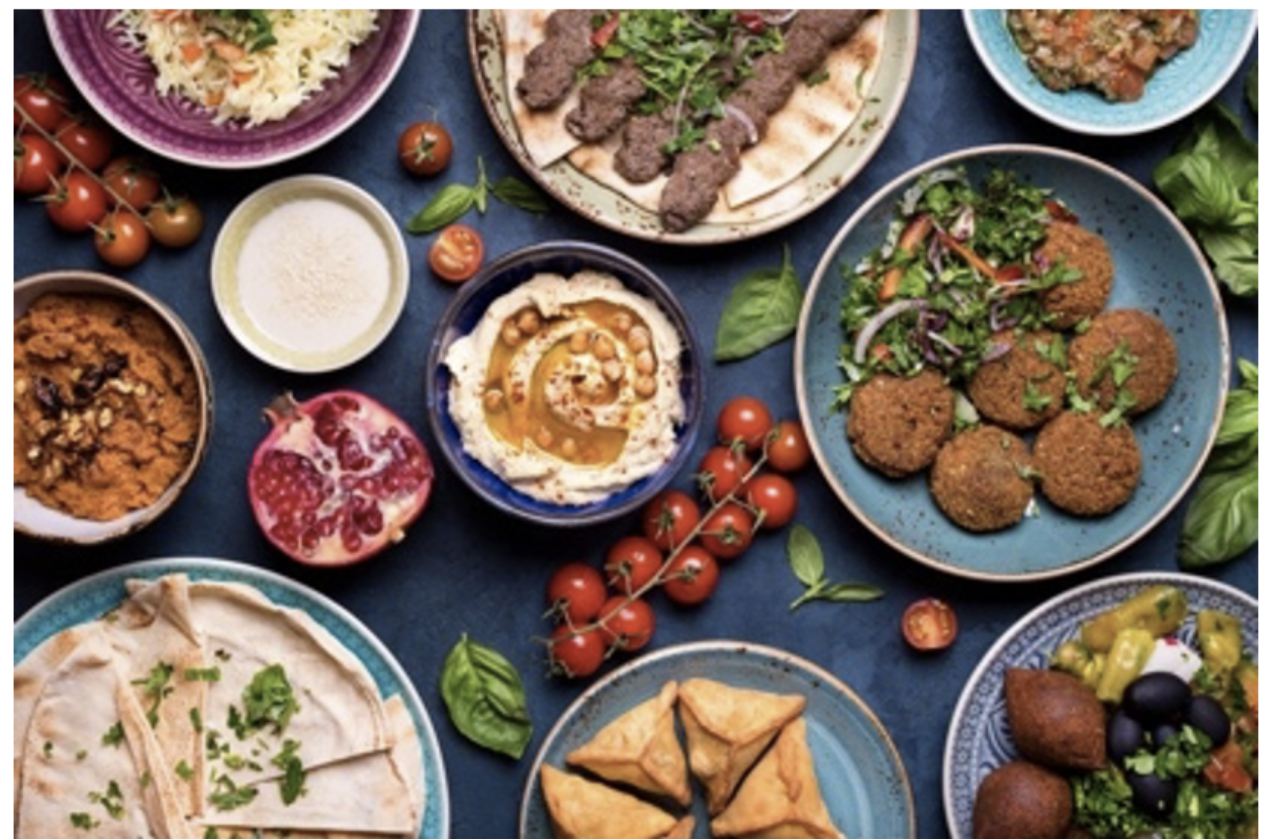 Levantine most common dishes. © colleges-fenway.org
Levantine most common dishes. © colleges-fenway.org
The world’s oldest recipes were found on three Akkadian tablets in ancient Mesopotamia (now Iraq) dating to about 1700 BC. In traditional Arab culture, when it comes to cooking, quantity is just as important as quality. A common misconception is that all Arabs share the same traditional cuisine: couscous, hummus or falafel.
There are significant differences between the main three regions of the Arab world — the Maghreb, the Fertile Crescent and the Arabian Peninsula — due to their history and environment. For example, tajine and semolina are widely present in the Maghreb, while in the Levant, dishes are based on rice or potatoes instead. All of them share one thing though: they are full of flavours and spices such as thyme, sumac, cumin, cardamom, and many more.
The fourth continent: calligraphy
The spread of writing in the Arab world began at the same time as that of Islam (7th century AD). Because it was initially used to deliver the Word of God to humanity, it was immediately given more importance than mere writing: it became sacred, it became art, it became Arabic calligraphy. It is at the crossroads of three types of art: visual, graphic and decorative art. The main tools needed are reed pens, ink, and special paper.
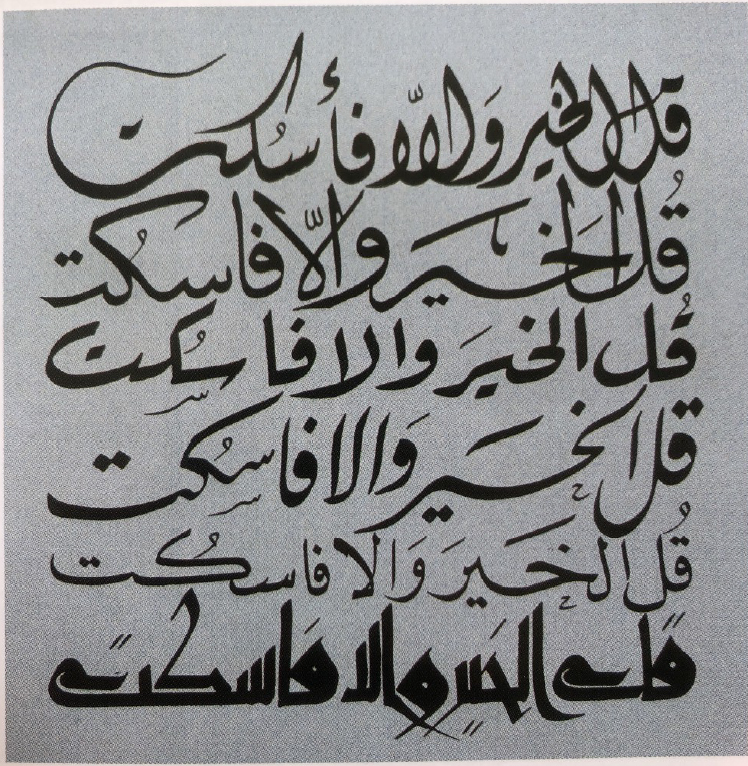
“Say what is good or keep silent”. © H. Massoudy, Flammarion (2003)
Arabic calligraphy is a distinct art: a harmonious dance between full and empty space, between continuous, sinuous curves and sudden points. It is used on many occasions: in the past for official messages, more recently in decoration, advertisement, or as just art. Arabic calligraphy abides by different rules, which have created many styles. The picture above presents a sentence in six of the most popular calligraphy styles, in order: Diwani, Thuluth, Ruq’ah, Ta’aliq (Persian), Neshkh and Kufi.
Among contemporary artists in Arabic calligraphy, I enjoy the works of Hassan Massoudy (Iraqi), Noha Hisham (Egyptian) and eL Seed (French-Tunisian), as depicted below, in order.

The fifth continent: spirituality
The Arab culture was influenced by Islam, which in turn greatly impacted its language. In daily conversation, phrases from the Qur’an that include the name of God are commonly and rightfully used: “bismillah” (in the name of God), “alhamdulillah” (praise be to God), “mashallah” (what God has willed, used to express praise, joy or thankfulness), “wallah” (I swear by God). Some of these phrases are even written on the back of some cars!
This is surprising as it is not allowed in proper French for instance, where using the name “God” is avoided or replaced by another term instead (i.e. sacrebleu instead of sacre + name of God). The phrase “inshallah” is special: it means either “yes”, “no”, “maybe”, “I will try”, “I don’t know”, “we’ll see” and even “I do not want to respond”! These phrases are used by all Arabs, whether Muslims or not, because the name of God is the same for all religions. Here is another widespread cliché: that all Arabs are Muslims. It is not the case!
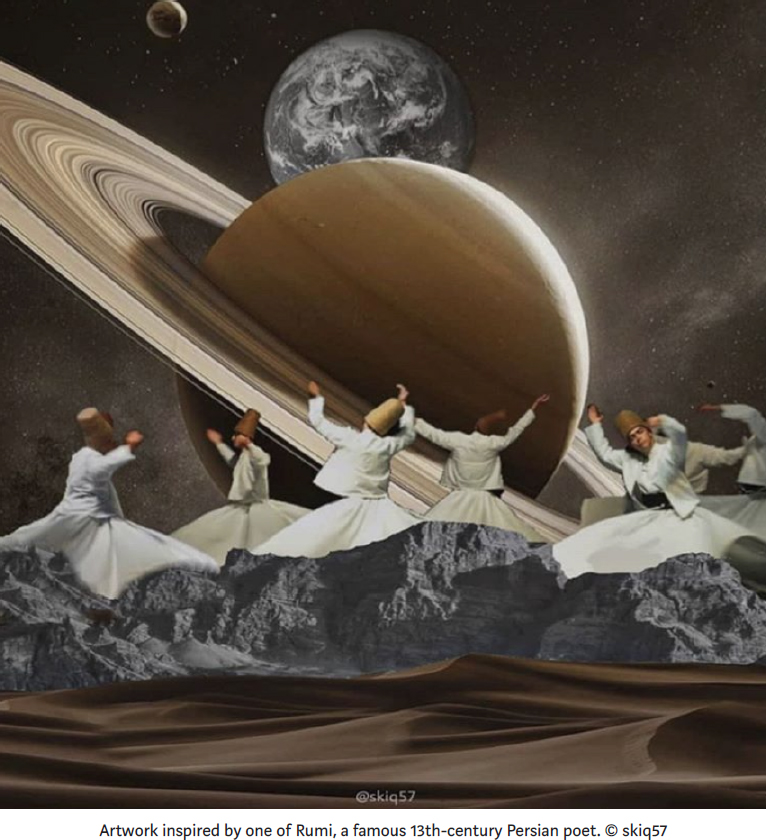
Although Muslims make up roughly 93% of the Arab population, you can find Christians, Jews, and atheists. And within all religions, there are different sub-groups.
Through the Arabic language, I discovered Sufism, a mystical branch of Islam. It is the search for a spiritual state that allows access to hidden knowledge. Through their famous whirling dance accompanied by music, the Whirling Dervishes performance is a spiritual journey to find the truth and reach perfection.
Final thoughts
The spread of communication and information has enabled us to discover different cultures and meet people from different backgrounds, with one click. We live in exciting times. The world is a mixture of languages, sounds, and colours: the more diverse the richer! I accidentally entered this amazing new world and its five continents while drawing these mesmerizing Arabic letters. I now feel like Gertrude Bell, a British writer, explorer and archaeologist, on an endless mission of learning about the Arab culture and language, with an optimistic outlook on life and undeterred by the magnitude of this challenge. I allowed myself to fall into this delicious addiction that fills all my senses with a wonderful substance: knowledge. This is the best way to build understanding and closeness in the humankind. This journey of discovery applies to any language you learn, and it is one of self-discovery as well: new tastes, interests, and ideas will develop inside you. Your turn has come: what journey will you embark on?
Note: this is an adaption of my original article written in Arabic (find it here).
More resources: maqam, mawal, Umm Kulthum song with English subtitles, recipes from the Arab world, calligrapher Hassan Massoudy, Whirling Dervishes dance.

